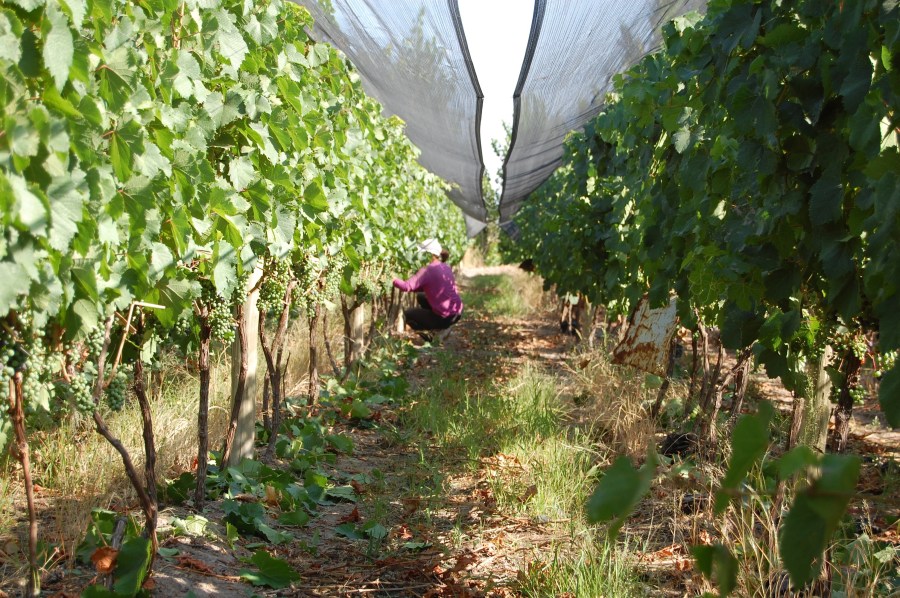I suppose we all agree that a good wine cannot exist without quality grapes and a knowledgable winemaker with good taste. We also know that the above statement would be very simplistic if we don’t try to analyse the factors that count the most in winemaking. This is not to emphasise one over another, as both make critical contributions in a quality wine; this is just an incentive to think through your current status and try to identify, aspects or priorities, that might require improvements in your present situation or future aspiration.
Here are some easy and at the same time complex points that I’d like to consider:
- Control the controllable
- High impact actions
- Use your toolbox
Control the controllable
We can’t control the climate or the terroir we can only influence them very marginally, although, we can decide (almost) everything else.
In some cases we can actually decide where to buy land to establish a vineyard. We’re currently living through a very exciting period in our young wine industry where we all have the chance to shape it in a constant search of growth and style. Being a young industry also means that there is not much data available, and answers found elsewhere will not necessarily be the correct answers in our country: we need to do our studies, which comes with risk and long term results. Wine is very complex, still not very much understood and this is part of the beauty of it. This means that choosing the “right terroir”, without actually tasting that terroir in a glass of wine, across a few vintages and making techniques, is nearly an impossible task. When the very basic parameters like temperature, rainfall, moisture, sun exposure, soil texture, nutrients etc. meet the requirement to grown vines, we’re still very far from understanding if those vines can produce a specific wine consistently and with a certain quality level.
Let’s imagine two extreme examples. The first is when the climate is perfect to make a certain wine, the winemaker and the viticulturist have easy lives because not many interventions or decisions are required.
The other extreme example, is when in difficult conditions the winemaker and the viticulturist need to express all knowledges and experiences to apply techniques that might still make a quality wine. Of course a winemaker is not a magician and if the grapes don’t meet some basic requirements there is nothing that can be done to achieve the wanted quality.
Even in the ideal situation, the winemaking team still need to make the decisions surrounding what is not required or what can be done. It’s a kind of triangle between: science, art and experience.
High impact actions
We need to study, trial, apply and adapt to the terroir where we operate; obviously the terroir will not do the same to allow us to make better wine.
My initial advice is to focus on high impact actions that can really make the difference in the glass. For example, within different blocks of pinot noir grape, there can be the choice of which one to use to make a red wine, a white, a rosé still or a sparkling. Can the same batch be used in very different styles of wines from the same harvest? The answer is often “yes” (in a balanced year).
Other impacting actions come with the decision of technique like skin management and extraction, de-acidification (chemical, by yeast, by bacteria or all of them…), oak, creation of blending components and so on.
On the vineyard management side, there is still a long way to go; very few people are actually studying how to influence and improve phenols, acidity, flavours and the mechanisms behind them to actually make better wine or choose where to plant. Too many times a viticulturist acts like a simple grower keeping the focus on diseases and the grapes are still commercialised based on sugar and acidity like 100 years ago… With regard to these factors, winemaking is more advanced than viticulture and currently provides higher impact actions.
Once we’ve successfully put in place and tested the high impact actions, then we can start the job of refining them focusing on further details for the next steps.
Use your toolbox
Our toolbox contains more or less the same tools, however, they can be used in different ways according to a specific terroir, purpose and experience.
We need to stay humble with an open mindset for constant learning. Sometimes, in order to be able to go to the next step, we need to stop a moment, go back to the basic principles, investigate and resume the process.
Here I have had a very general discussion about if the wine is made on the vine or in the winery; although, winemaking is always a process of team work and the real point is what we can do to control the controllable using and developing our tools. In September, I will talk about who actually decides which specific wine to make: is it the vineyard or the winemaker?
For more like this, sign up for the FREE Vineyard newsletter here and receive all the latest viticulture news, reviews and insight




